Picture this: you step out onto your pool deck, the sun shining brightly overhead, and your sparkling blue pool beckoning you for a refreshing dip. But before you can dive in, there’s work to be done. Maintaining a pool is a year-round commitment, and each season brings its own set of maintenance needs. From the exhilarating opening of your pool in the spring to the meticulous care it requires in the winter, this guide will walk you through the essential steps to keep your pool in pristine condition. So, grab your skimmer, and let’s dive into the world of year-round pool care.
Key Takeaways
- Regular maintenance is essential for keeping a pool clean and safe throughout the year.
- Proper water chemistry and filtration are crucial for maintaining optimal pool conditions.
- Winterizing the pool and equipment is necessary to prevent damage during the colder months.
- Pool safety should always be a top priority, including installing fences, conducting regular inspections, and ensuring lifeguards are trained and certified.
Spring Pool Opening and Preparation
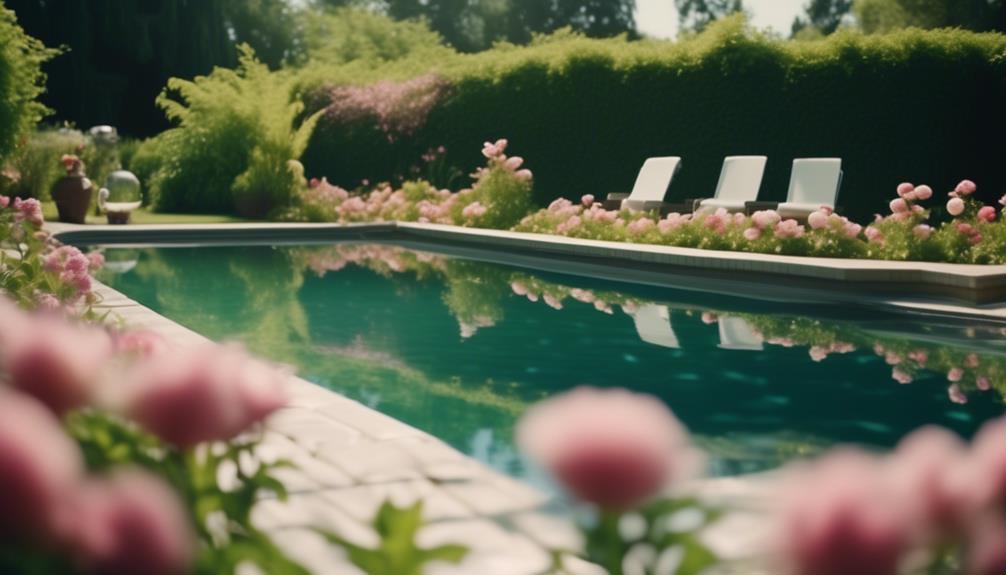
To properly prepare your pool for the upcoming season, follow these detailed steps for a successful spring opening. Spring cleaning is an essential part of pool maintenance to ensure that your pool is clean and ready for use. Start by removing any debris, such as leaves or branches, from the pool surface and skimmer baskets. Thoroughly brush the pool walls and floor to remove any algae or dirt buildup. It’s also crucial to clean or replace the pool filter to ensure optimal filtration. Check the chemical balance of the water and adjust as needed, adding chlorine or other sanitizers to maintain proper levels. Additionally, inspect the pool equipment for any signs of wear or damage. Check the pump, filter, and heater for leaks or malfunctioning parts and address any issues promptly. Lubricate o-rings and seals to prevent leaks and ensure smooth operation. Finally, test the pool water for pH, alkalinity, and calcium hardness levels and make any necessary adjustments. By performing these spring maintenance tasks, you’ll ensure that your pool is clean, safe, and ready for enjoyment throughout the upcoming season.
Summer Maintenance and Water Chemistry
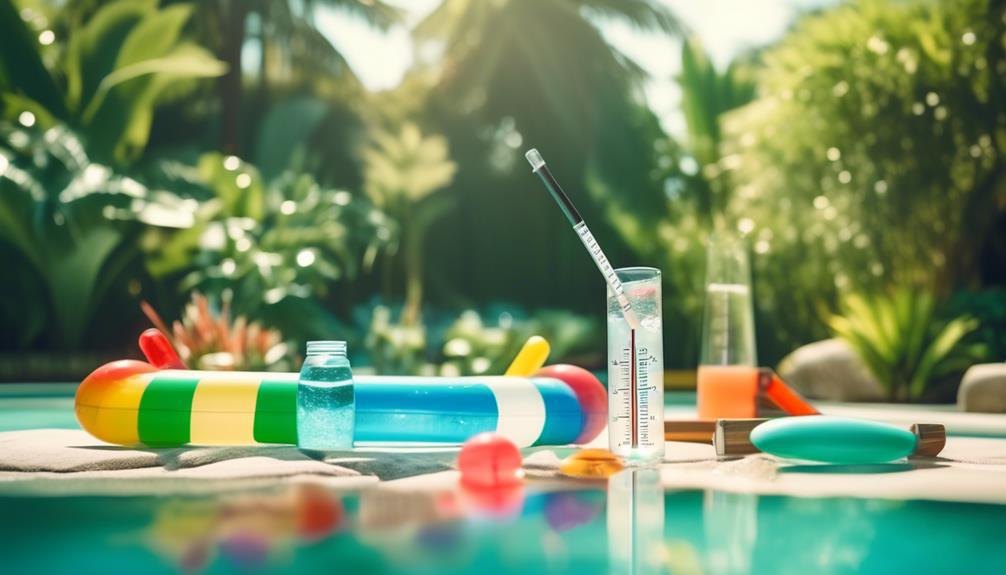
During the summer months, maintaining proper water chemistry is crucial for a clean and healthy pool environment. Here are three important steps to keep in mind for summer pool maintenance:
- Regularly clean and skim the pool: Summer is a time when debris like leaves, insects, and grass clippings tend to accumulate in the pool. To ensure a clean swimming experience, skim the water surface daily using a net or skimmer basket. Additionally, vacuum the pool floor and brush the walls weekly to remove any dirt or algae buildup.
- Test and balance pool water regularly: The hot summer weather can lead to increased evaporation and higher chlorine consumption. It’s essential to test the pool water regularly and maintain the right chemical balance. Use a reliable pool water testing kit to check the pH levels, chlorine levels, alkalinity, and calcium hardness. Adjust these levels as necessary to prevent algae growth, maintain water clarity, and protect swimmers from any potential health hazards.
- Shock the pool when needed: During the summer, heavy pool usage, warmer temperatures, and increased sunlight can lead to the depletion of chlorine levels. To prevent the growth of bacteria and algae, shock the pool regularly. Follow the manufacturer’s instructions and guidelines for the appropriate amount of shock to use based on the size of your pool. This will help maintain a safe and clean swimming environment throughout the summer season.
Fall Debris Removal and Winterizing
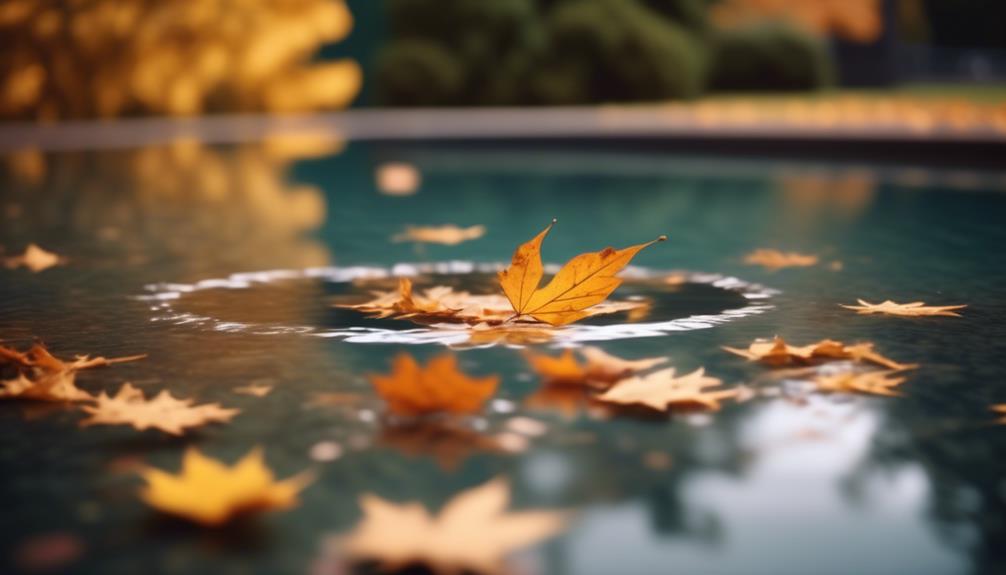
Now that you’ve taken care of summer maintenance and ensured a clean and healthy pool environment, it’s time to prepare for the upcoming season by focusing on fall debris removal and winterizing. As the leaves start to fall, it’s important to keep your pool free from debris to prevent clogging and damage to the pool equipment. Regularly skim the surface of the pool using a leaf net or skimmer to remove any leaves or other debris that may have accumulated. It’s also a good practice to check and clean the pool filters more frequently during this time to ensure maximum efficiency.
Winterizing your pool is crucial to protect it during the cold months. One of the key steps is to install a winter pool cover. Make sure the cover is clean and free from any debris before placing it over the pool. This will prevent leaves, dirt, and other debris from entering the pool and causing potential damage. Additionally, it’s important to properly secure the cover to ensure it stays in place during strong winds or heavy snowfall.
Remember to drain the pool water to the appropriate level, typically below the skimmer, to prevent freezing and potential damage to the pool plumbing. It’s also recommended to add a winterizing chemical kit to the pool water to maintain water quality and prevent algae growth.
Taking the time to properly remove fall debris and winterize your pool will help protect it during the colder months and ensure a smooth transition when it’s time to open it again in the spring.
Winter Pool Cover and Equipment Care
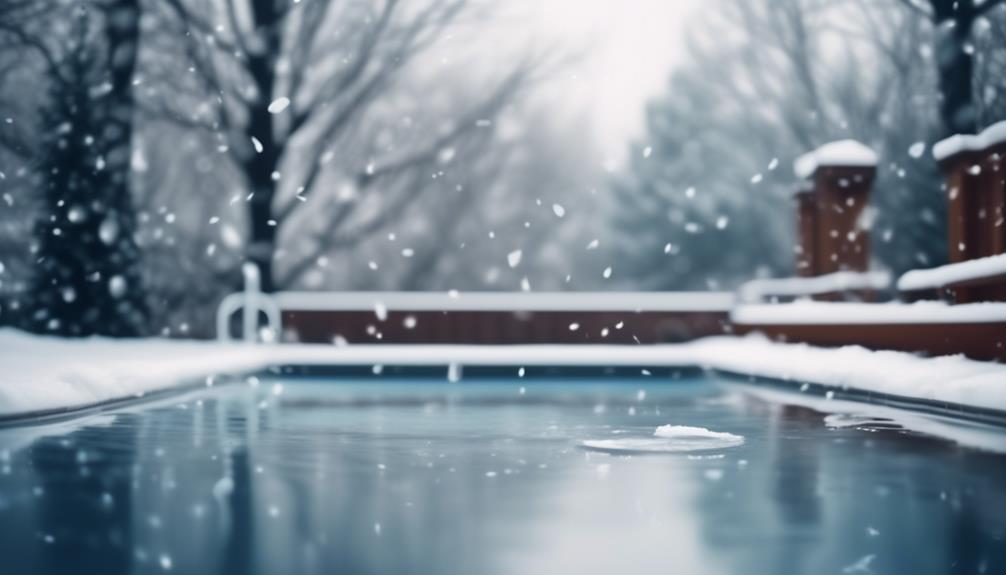
Ensure the longevity and functionality of your pool cover and equipment during the winter season with proper care and maintenance. Here are three essential steps you need to take for winter pool cover maintenance and winter equipment storage:
- Clean and Dry: Before covering your pool for the winter, make sure to thoroughly clean and dry the pool cover. Remove any debris, leaves, or dirt that may have accumulated. Use a mild detergent and a soft brush to scrub away any stains or algae growth. Once the cover is clean, allow it to dry completely to prevent mold or mildew formation.
- Tighten and Secure: Check the pool cover for any tears, holes, or loose straps. Repair any damages promptly to ensure a tight and secure fit. A properly fitted cover will prevent debris from entering the pool and protect your equipment from harsh winter weather conditions. Use bungee cords or water bags to secure the cover in place and prevent it from blowing off during strong winds.
- Store Equipment Properly: Before storing your pool equipment for the winter, make sure to clean and dry each item thoroughly. Remove and clean the pool ladder, skimmer baskets, and pump baskets. Drain all water from the pool pump, filter, and heater to prevent freezing and potential damage. Store the equipment in a dry and protected area, away from extreme temperatures and moisture.
Year-Round Pool Care Safety and Inspections
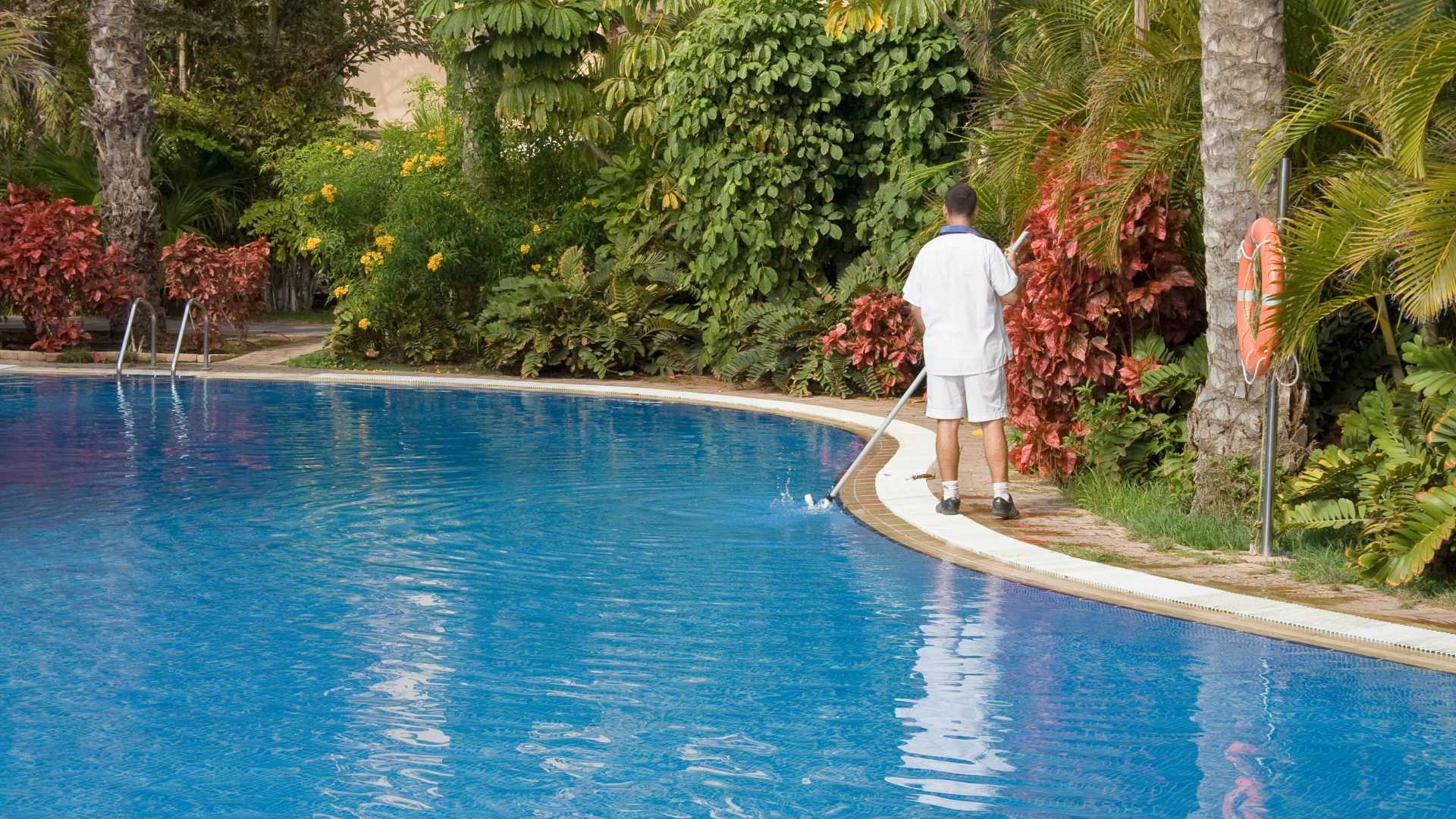
Maintaining year-round pool safety and conducting regular inspections is crucial to ensure a safe and enjoyable swimming experience. As a pool owner, it is your responsibility to prioritize the safety of everyone who uses your pool. This means implementing safety measures such as pool fence installation and ensuring that your pool is regularly inspected for any potential hazards.
One of the most effective ways to enhance pool safety is by installing a pool fence. A pool fence acts as a barrier, preventing unauthorized access to the pool area. It is essential to choose a fence that meets the safety standards set by your local regulations. A sturdy and properly installed fence can significantly reduce the risk of accidents and drowning incidents.
Regular inspections are also necessary to identify and address any safety concerns. These inspections should cover various aspects, including the pool structure, equipment, and surrounding area. It is advisable to hire a professional pool inspector to conduct a thorough assessment. They will check for any signs of damage, leaks, or malfunctioning equipment that could pose a risk to swimmers.
Furthermore, if you have a public or commercial pool, it is crucial to ensure that your lifeguards are certified and trained according to the requirements set by your local authorities. Lifeguard certification requirements vary but generally include first aid and CPR training, as well as specialized lifeguard training.
More pool maintenance tips here.
Frequently Asked Questions
How Often Should I Test the Ph Levels of My Pool Water?
You should test the pH levels of your pool water regularly to ensure it stays balanced. Maintaining a proper pH level is important for the overall health and cleanliness of your pool.
What Are Some Common Signs of Pool Equipment Wear and Tear?
If you want to keep your pool in good shape, it’s important to stay on top of pool equipment maintenance. Look out for signs of equipment damage, like leaks, strange noises, or decreased performance.
Can I Use Regular Household Cleaning Products to Clean My Pool?
You can use alternative cleaning methods and eco-friendly pool cleaning products instead of regular household cleaning products to clean your pool. These options are safer for the environment and can help maintain the health of your pool.
What Is the Recommended Temperature Range for Winter Pool Cover Installation?
To ensure proper installation of your winter pool cover, it is recommended to install it when the temperature ranges from 50 to 60 degrees Fahrenheit. This will help maintain the cover’s integrity and protect your pool throughout the winter season.
How Often Should I Inspect My Pool for Potential Safety Hazards?
You should regularly inspect your pool for potential safety hazards to ensure the well-being of swimmers. Regular inspections are crucial in maintaining pool safety measures and preventing accidents.
How Often Should I Test the Ph Levels of My Pool Water?
You should test the pH levels of your pool water regularly to ensure it stays balanced. Maintaining a proper pH level is important for the overall health and cleanliness of your pool.
What Are Some Common Signs of Pool Equipment Wear and Tear?
If you want to keep your pool in good shape, it’s important to stay on top of pool equipment maintenance. Look out for signs of equipment damage, like leaks, strange noises, or decreased performance.
Can I Use Regular Household Cleaning Products to Clean My Pool?
You can use alternative cleaning methods and eco-friendly pool cleaning products instead of regular household cleaning products to clean your pool. These options are safer for the environment and can help maintain the health of your pool.
What Is the Recommended Temperature Range for Winter Pool Cover Installation?
To ensure proper installation of your winter pool cover, it is recommended to install it when the temperature ranges from 50 to 60 degrees Fahrenheit. This will help maintain the cover’s integrity and protect your pool throughout the winter season.
How Often Should I Inspect My Pool for Potential Safety Hazards?
You should regularly inspect your pool for potential safety hazards to ensure the well-being of swimmers. Regular inspections are crucial in maintaining pool safety measures and preventing accidents.


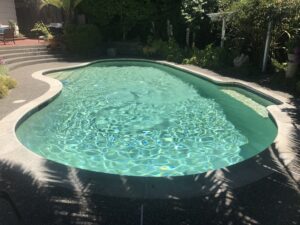



 Alex Cota
Alex Cota  Sophie Pekic
Sophie Pekic Rudy Reyes
Rudy Reyes  Mark Harlan
Mark Harlan Kevin Hall
Kevin Hall 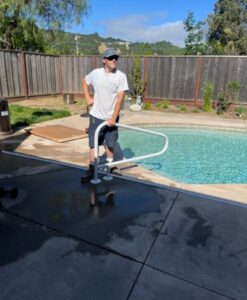 Howard (Howie) Van Lare
Howard (Howie) Van Lare  Chris Cavalerro
Chris Cavalerro 

 Betty Garmendina
Betty Garmendina George Wallace
George Wallace Zach Zastrow
Zach Zastrow Jorge Salazar Bernal
Jorge Salazar Bernal Mike Watson
Mike Watson Jane Ciuchta – Hired 2015
Jane Ciuchta – Hired 2015 Bruce Muir – Hired 2020
Bruce Muir – Hired 2020 David-Metzger – Hired 2014
David-Metzger – Hired 2014 Robin Clarke – Hired 2019
Robin Clarke – Hired 2019 Maddi Davidson – Hired 2022
Maddi Davidson – Hired 2022 John Albachten – Hired 2015
John Albachten – Hired 2015 Jay Bergmann – Hired 2023
Jay Bergmann – Hired 2023 Summer Venegas – Hired 2017
Summer Venegas – Hired 2017 Rebecca Jones – Hired 2015
Rebecca Jones – Hired 2015 Jane Doe – Hired 2014
Jane Doe – Hired 2014